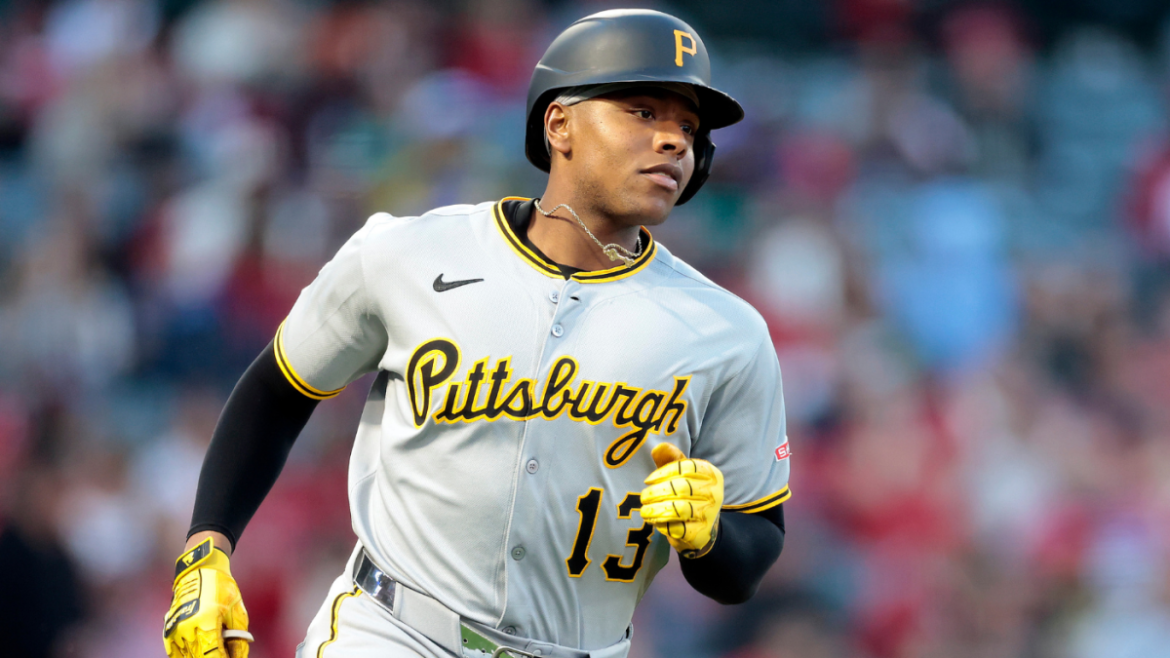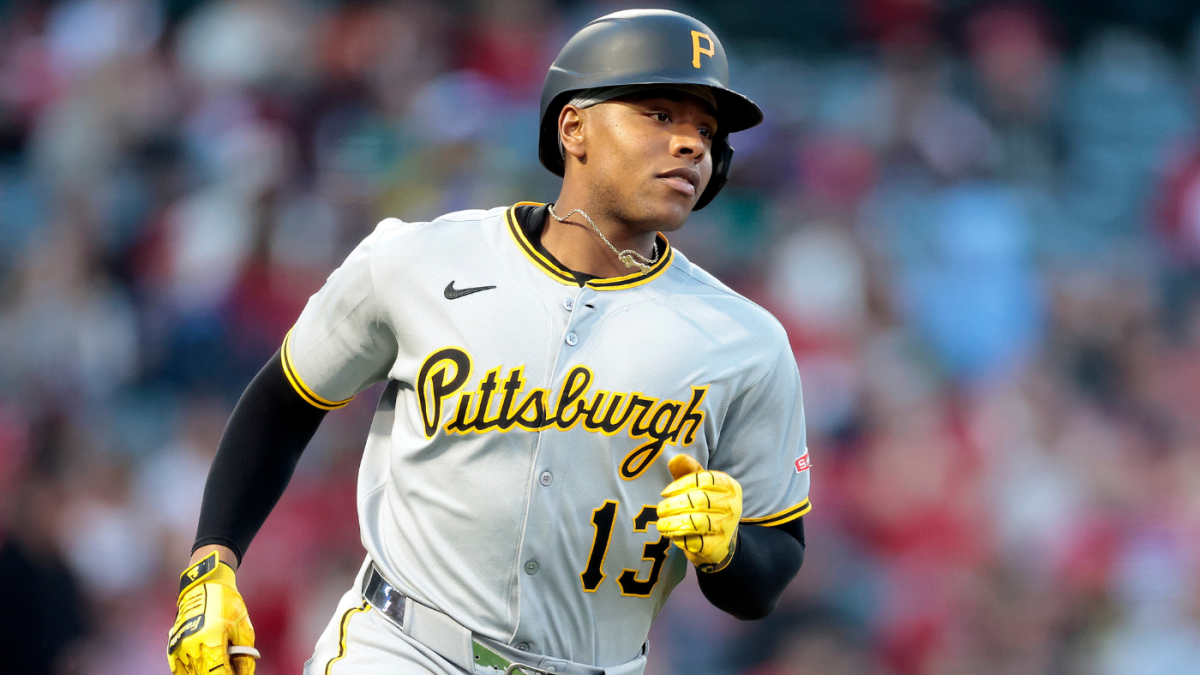The Ke’Bryan Hayes Trade: A Strategic Shift in the NL Central
Introduction: A Bold Move Before the Deadline
The baseball world witnessed a significant intra-division trade as the Pittsburgh Pirates sent Gold Glove-winning third baseman Ke’Bryan Hayes to the Cincinnati Reds. This deal, executed just before the MLB trade deadline, sent shockwaves through the National League Central, raising questions about the strategic direction of both franchises. The trade involved Hayes, a defensive stalwart, in exchange for reliever Taylor Rogers and prospect Sammy Stafura. This report explores the nuances of this transaction, its potential impact on both teams, and the broader implications for the division.
The Trade Breakdown: What Each Team Gained
Cincinnati Reds: Strengthening the Infield
The Reds’ acquisition of Hayes addresses a critical need for defensive stability at third base. Hayes’ Gold Glove-winning performance in 2023 speaks volumes about his defensive prowess. His range, glove work, and arm strength make him a game-changer in the infield. Beyond defense, Hayes brings a consistent bat, even if his offensive numbers don’t dominate the league. His ability to get on base and contribute in clutch situations adds value to the Reds’ lineup.
For the Reds, this trade is a clear statement of intent. They are positioning themselves as contenders in a competitive division. Hayes’ contract, which extends through 2029, provides long-term stability, allowing the Reds to focus on other areas of their roster. The financial commitment is significant, but the cost certainty is a valuable asset in roster management.
Pittsburgh Pirates: Prioritizing the Future
The Pirates’ decision to trade Hayes reflects a strategic shift towards rebuilding. While losing a player of Hayes’ caliber is never easy, the Pirates are prioritizing future assets and financial flexibility. Taylor Rogers, the reliever acquired in the trade, provides immediate help to the bullpen. However, the real value for the Pirates lies in the potential of Sammy Stafura, a prospect who could develop into a key contributor in the years to come.
This trade allows the Pirates to free up payroll space, which can be used to invest in other players or improve their overall financial health. The move also sends a clear message to fans and the league: the Pirates are committed to a long-term vision, even if it means parting ways with a beloved player.
Intra-Division Trades: A Rare but Strategic Move
Trades between division rivals are relatively uncommon due to the inherent risk of strengthening a direct competitor. However, the Pirates’ decision to trade Hayes to the Reds highlights the specific circumstances and motivations driving this deal. For the Reds, the need for an immediate defensive upgrade outweighed the risk of helping a division rival. For the Pirates, the long-term benefits of acquiring prospects and financial flexibility were deemed more valuable than retaining Hayes.
This trade underscores the intricate balance between short-term goals and long-term strategies in baseball. Every decision can have a ripple effect across the league, and this trade is no exception.
Impact on the NL Central: Shifting the Competitive Landscape
The Ke’Bryan Hayes trade undoubtedly impacts the competitive landscape of the NL Central. The Reds, with their improved defense, become a more formidable opponent. Their ability to prevent runs will be enhanced, potentially leading to more wins and a stronger challenge to other teams in the division. The Pirates, on the other hand, may experience some short-term setbacks as they adjust to life without Hayes. However, if their acquired prospects develop as hoped, they could be well-positioned for long-term success.
The trade also raises questions about the future of the division. Will the Reds’ defensive upgrade be enough to propel them to the top of the standings? Will the Pirates’ rebuilding efforts pay off in the long run? These are questions that will be answered in the coming seasons.
Financial Implications: Balancing Cost and Value
Hayes’ eight-year, $70 million contract represents a significant financial commitment for the Reds. However, it also provides cost certainty at a premium position. The Reds know what they’re paying for Hayes’ services over the next several years, allowing them to plan their budget accordingly. This financial stability is crucial for a team aiming to contend in a competitive division.
For the Pirates, trading Hayes frees up payroll space, which can be used to invest in other players or improve their overall financial health. This financial flexibility is a valuable asset in the ever-changing landscape of Major League Baseball.
Fan Reaction and Expectations: Mixed Emotions
The trade has likely elicited varied reactions from fans of both teams. Reds fans are likely excited about the arrival of a Gold Glove-winning third baseman, viewing it as a sign that the team is serious about contending. Pirates fans, however, may be disappointed to see a popular player traded away, especially to a division rival.
The success of this trade, in the eyes of the fans, will ultimately depend on the performance of Hayes in Cincinnati and the development of the players acquired by the Pirates. If Hayes continues to excel and the Pirates’ prospects pan out, this trade could be seen as a win-win scenario. However, if one team significantly outperforms the other, the narrative may shift.
Conclusion: A Trade with Far-Reaching Consequences
The trade sending Ke’Bryan Hayes to the Cincinnati Reds is a multifaceted transaction with implications for both teams and the NL Central division. The Reds gain an elite defensive player who solidifies their infield and provides long-term stability. The Pirates, in turn, acquire prospects and financial flexibility, positioning themselves for a potential rebuild.
Whether this trade proves to be a win-win scenario or favors one team over the other remains to be seen. However, its impact on the competitive landscape of Major League Baseball is undeniable. This deal underscores the intricate balance between short-term goals and long-term strategies in baseball, where every decision can have a ripple effect across the league. The Ke’Bryan Hayes trade is a testament to the strategic complexity of the sport and the bold moves that shape its future.





